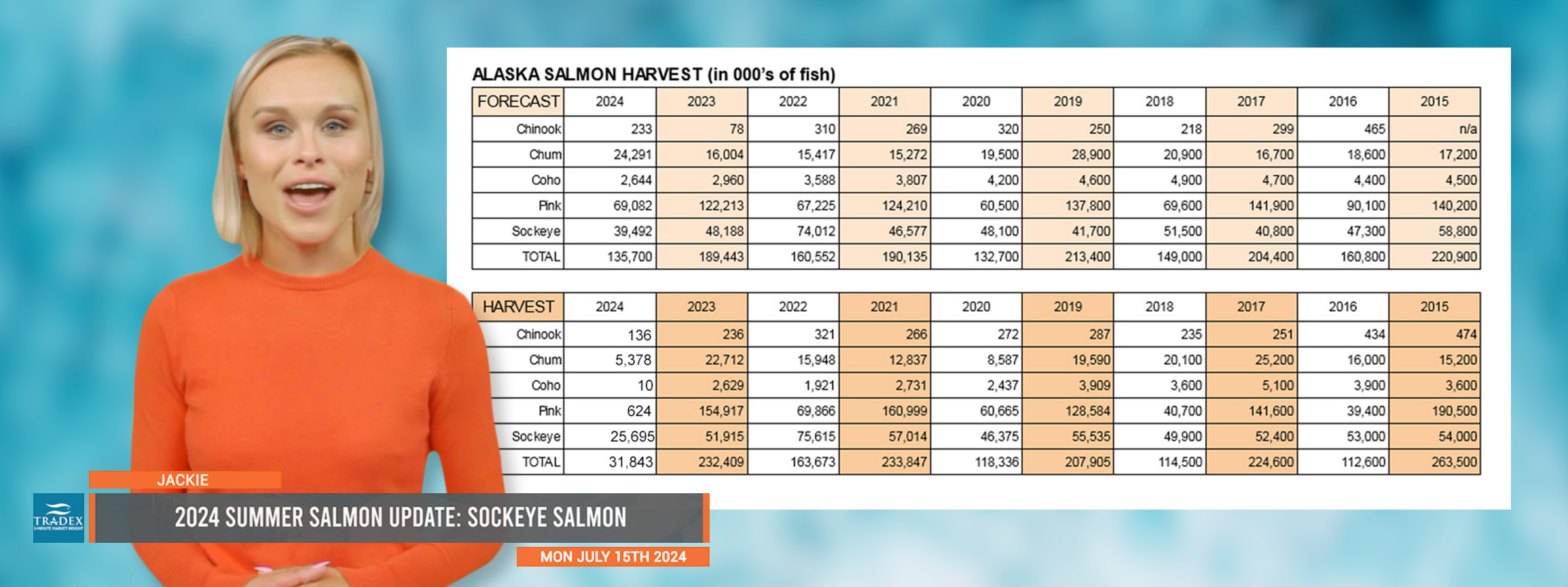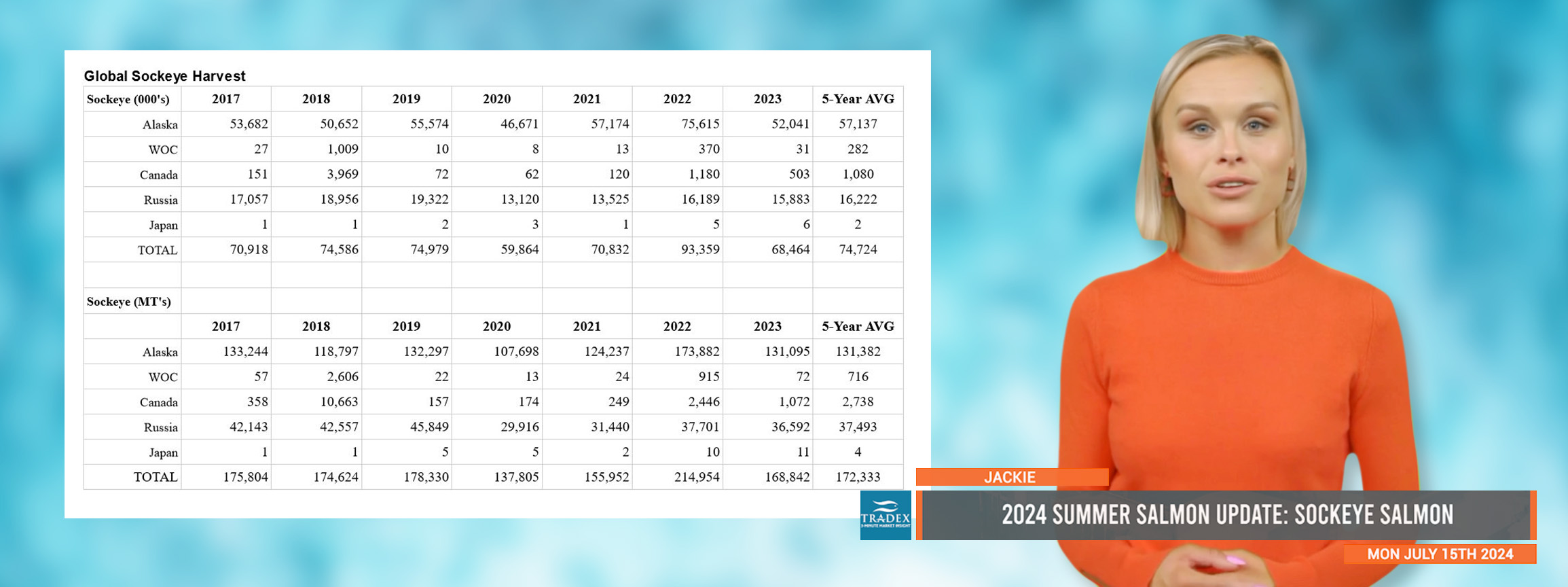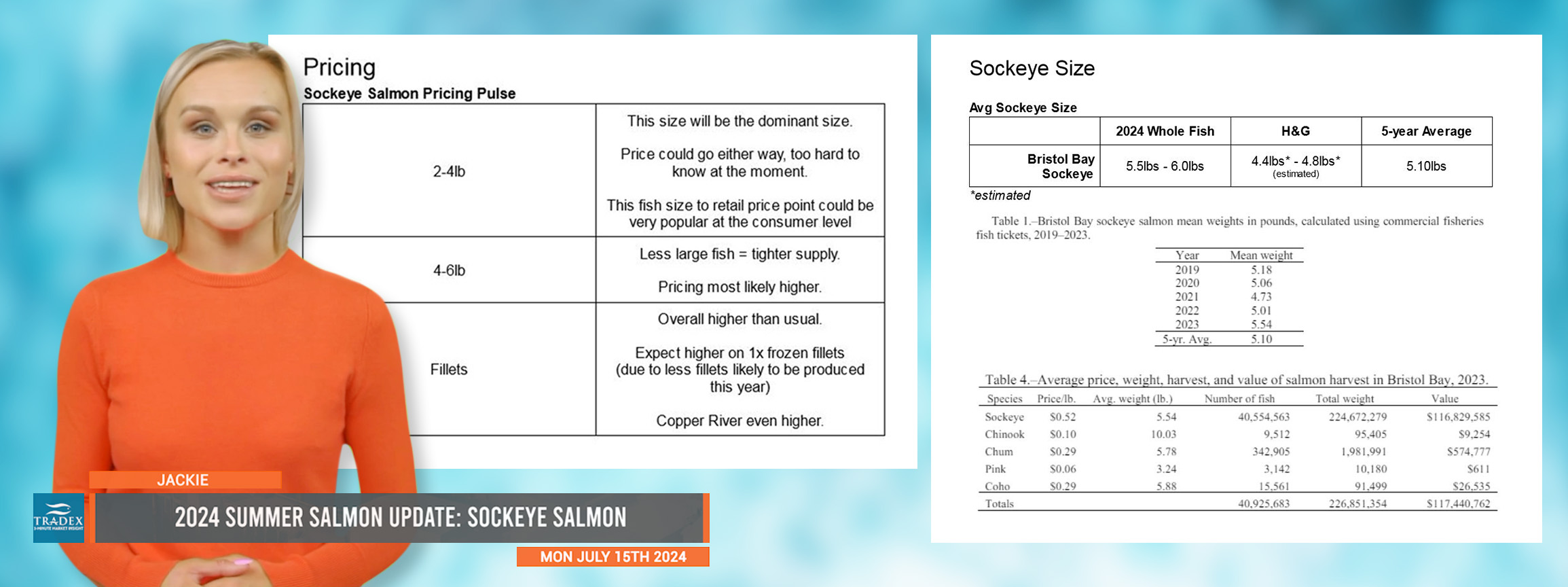
Loading
EP 699 | AIRED 07/15/2024
2024 Summer Salmon Update: SOCKEYE
July 15th, 2024 - Here is your Summer Sockeye Salmon update as we enter the time of year when sockeye landings in Alaska reach their peak.
Last year, global sockeye salmon harvest totalled just over 168,000 metric tonnes from about 68,000 sockeye with the lion's share of supply coming from Alaska, then Russia.
This year, while sockeye landings are expected to be slightly lower than last year, Alaska fishery managers report that the numbers are still impressive and likely represent above-average harvests. They caution against comparing these figures to the exceptional bumper year of 2022, when Alaska alone harvested nearly 174,000 metric tonnes of sockeye from 75.6 million fish.
In Alaska, over 50 percent of the 39.5 million sockeye salmon forecast has already been harvested. Fishery managers are optimistic, suggesting that the final tally will likely exceed expectations. Near the end of July, Alaska sockeye landings will start winding down - while Pink and Coho ramp up.

In Canada, sockeye supply has continued to remain low, with last year’s harvest only totaling about 1,000 metric tonnes from 500,000 fish, which is 30 percent below the previous 10-year average. Although most B.C. sockeye still remain non-MSC status, Ocean Wise recently announced new recommendations for wild-caught B.C. salmon, including some sockeye. Since Fraser River sockeye typically follow a 4-year cycle, this year is expected to be another low harvest year.
In Russia, over 10 percent of the 27.5 thousand metric tonne sockeye forecast has been realized. This year’s forecast is about 27 percent lower than the average past 5-year harvest. It is important to note that Russian-origin salmon continues to be banned from entering the USA.

Advertise Here: advertising@tradexfoods.com
Sockeye sizes have been trending smaller over the years and fishermen are said to be reporting an average weight of about 4 pounds right now compared to 5.5 pounds last year. The Alaska forecast is predicting that 50 percent will be 1.2 fish and about 31 percent 1.3 fish. Last year Russian sockeye averaged about 5 pounds.

On the pricing side, tighter supply and smaller fish, coupled with favorable consumer spending trends will most likely mean higher price pressures.
Our recommendation is to make your commitments as soon as possible on your sockeye requirements. For specific pricing, please contact a Tradex Foods representative.

--- Keep tuned-in to our 3-Minute Market Insight by subscribing as we deliver updates on all salmon species as the season moves along.


